How To Prepare Your House For A Flood: 8 Crucial Steps
-
Pete Ortiz
- Last updated:

Flooding protection is a priority when living near water, but recent research reveals that the threat is more severe than we may realize. A 2018 study¹ found that an estimated 27 million Americans live in possible flooding areas, over three times the number on FEMA’s flood maps.
The situation is treacherous for unwitting homeowners, as the lack of resources leaves them at risk of being under-prepared for a disaster. A single inch of water is all it takes to cause up to $29,000 in damage¹, making small proactive measures potentially life-changing.
We have many options at our disposal to lessen a flood’s emotional and financial costs, but the onus is on you to protect your family and property. Follow these eight crucial steps to prepare your house for a flood and provide yourself with peace of mind when the unthinkable happens.
The 8 Steps How To Prepare Your House For A Flood
1. Get Flood Insurance
Flood insurance is a requirement if you have a government-backed mortgage in a Special Flood Hazard Area. Otherwise, you likely won’t have it unless you ask. Homeowners insurance only covers water damage from internal causes, like a burst water pipe. You’ll need separate flood insurance for water invasion, typically costing $600–$900 annually.
If your community participates, you can buy flood insurance through the National Flood Insurance Program (NFIP). The program lets homeowners buy up to $250,000 in building coverage and $100,000 for contents. The Community Status Book¹ shows which locations are eligible for these plans and any discounts they receive for their community’s efforts.
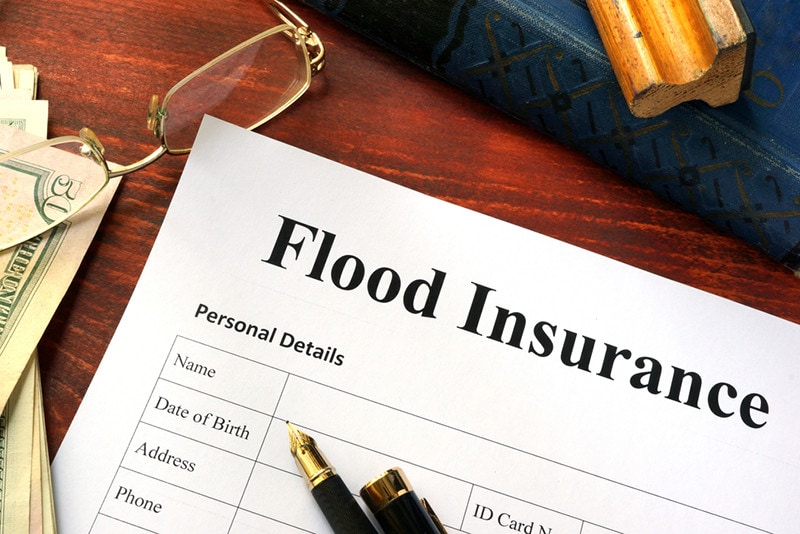
How to Get Flood Insurance
Find flood insurance by discussing options with your homeowner’s insurance agent. They can give you information on availability and your community’s status while offering rates. The NFIP also supplies a provider locator tool¹ to search for insurers in your state. Private insurance carriers offer plans beyond the NFIP, giving homeowners more options if they are in a non-NFIP community or need higher coverage amounts.
The NFIP offers information to communities as flood risks change, but getting insurance is your responsibility. Research available options, shop quotes, and get coverage as soon as possible. Deductibles can get pricey, starting at $1,000 and sometimes exceeding $10,000. But with damages almost guaranteed to eclipse $10,000 when only a few inches of water enter the home, having insurance is the most critical step in preparing your house for a flood.
2. Take Stock of Your Property
Create a household inventory to make insurance claims after a flood fast and hassle-free. Taking this step before buying insurance will help you get the best coverage amount and the most value from your plan. The following are a few ways to ensure a more efficient claims process before a flood occurs:
- Take photos and videos of items showing their condition and serial/product information to help prove the value
- Scan receipts, warranty paperwork, and other critical documents, and save the images to cloud storage
- Keep copies of critical documents, including birth certificates, social security cards, medical records, and wills, in a safe deposit box
Talk to your insurance agent if you’re unsure which items to prioritize. They can walk you through essentials that many homeowners forget and offer advice on documenting your inventory.
3. Stay Tuned for Flood Watches
Following the FEMA flood map¹ for your area is a crucial first step in assessing your flood risk and taking adequate safety measures. But you mustn’t use a low-risk status as an excuse to take a relaxed outlook. At least 20% of flood insurance claims¹ come from low-moderate risk areas, which could be higher if more individuals in those areas had coverage.
Don’t underestimate the chance of flooding that comes with an extreme weather event. Flash flooding and seasonal surges can happen almost anywhere, making it vital to stay aware and prepared for an emergency.
Learn the emergency radio stations to follow in your area and the terminology to understand the threat as it evolves. Begin moving critical documents and items and elevating furniture as soon as you see a flood watch alert on your phone, radio, or television. Carefully monitor any flood watch so you can take immediate action or evacuate if it escalates.
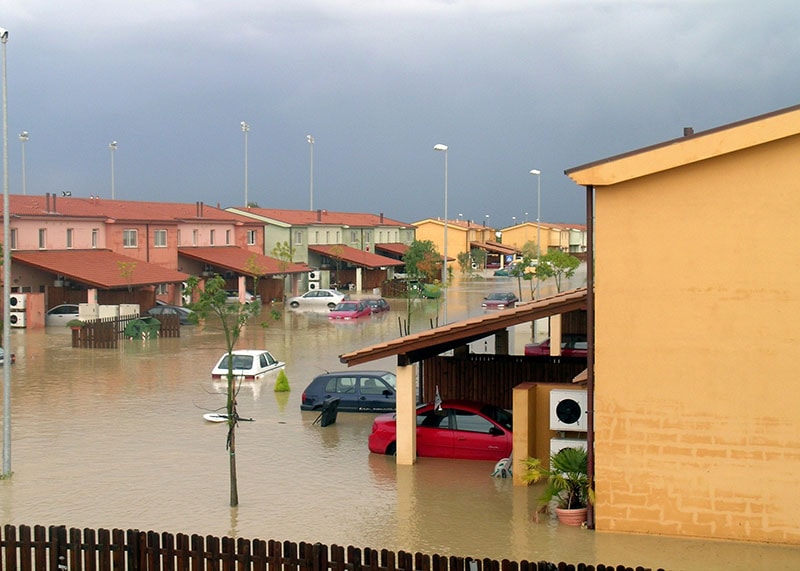
4. Keep a Flood Plan
Create a household evacuation and emergency plan in case of a flood, and cover each task with your family. Developing an action plan will provide a system of checks to keep everyone accountable and ensure every list item gets completed. Preparation can go a long way in keeping your family members confident, calm, and in control during a crisis.
Consider the following checklist items to prepare for damage and a potential evacuation:
- Move valuables, furniture, and other essential items to the upper floors
- Unplug appliances and switch off breakers
- Turn off the main gas or propane line
- Shut off the water line to the water heater
- Prepare pets and their supplies for evacuation
Map out an escape route and plan a destination in case of an evacuation. Practice the flood response with your family, and account for any unique needs, such as medical treatments, that may affect them.
5. Maintain an Emergency Kit
An emergency kit will help you get through any power outages or cutoffs from essential services and utilities during a flood. Some of the basic kit items include:
- 3–4 days’ worth of non-perishable food
- 3–4 days’ worth of water (1 gallon per person per day)
- Flashlights and batteries
- Battery backup
- Charged cell phones
- Duct tape and plastic sheeting
The Department of Homeland Security offers a helpful list of essentials¹ to prepare in case of a flood and tips for maintaining it.
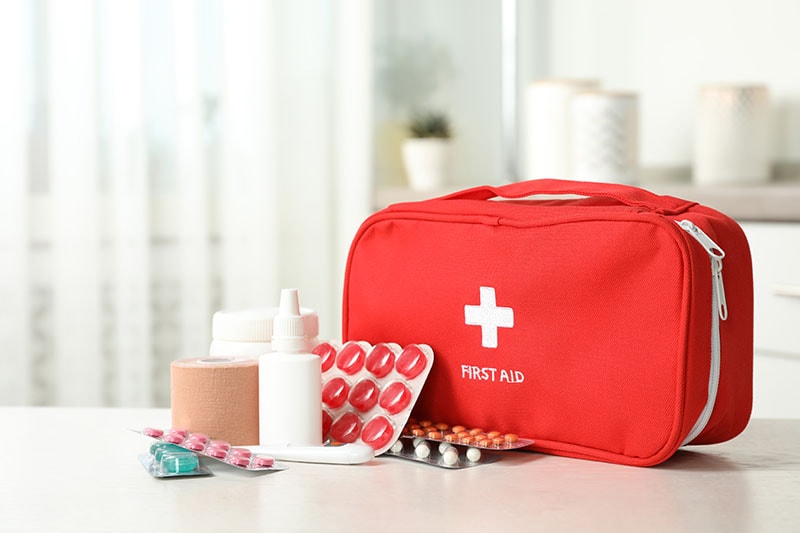
6. Raise Electrical Fixtures
Water reaching your house’s sockets and circuits will create an extreme safety hazard and increase your home repair costs following a flood. Prepare your home’s electrical system by elevating all connections and wiring at least 12 inches above the expected flood line. If possible, raise appliances, fuel tanks, and electronics above this line, anchoring what you can.
7. Clean Drains and Gutters
Your home’s drains and gutters are crucial defenses for the foundation and basement, whether during a flood or simply a hard rain. Keep them clear of debris and securely attached to the house to prevent overflow and damage to your roof. Direct downspouts toward a drain with a clear path, using downspout extensions to move water further from the foundation.
While outside, consider the grading around your home and whether it slopes away from your foundation. Landscaping may restrict drainage, and you might have to remove plants near the house to keep roots and brush from allowing water to pool. If grading is too challenging on your property, a French drain installation can be a straightforward yet durable and effective supplemental drainage option.
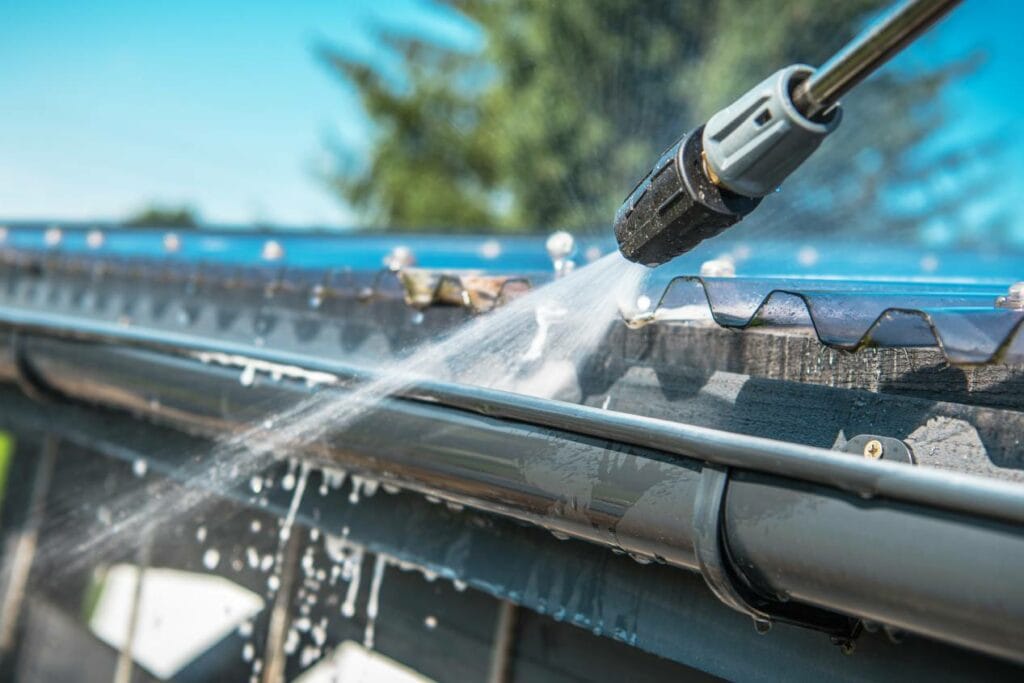
8. Waterproof the Basement
Waterproofing the basement will protect the most critical points in your home’s foundation. Immediate steps any homeowner can take include:
- Weatherstripping doors
- Caulking windows
- Applying waterproofing to the foundation (e.g., waterproof paint, plastic sheeting).
Dry floodproofing like this can keep minor water infiltration from occurring. If you have a below-grade basement, talk to a waterproofing professional about enhanced options.
Sump Pump and Backflow Valves
One of the best tools for protecting the basement during a flood is a sump pump installation. The pump will manage incoming groundwater, and a battery backup will provide electricity if you lose power. If water infiltration into the basement is unavoidable, elevate appliances and replace the carpet with hard flooring to prevent as much damage and mold as possible after a flood.
Sewage backup can leave a particularly nasty cleanup even if floodwaters don’t come through your basement doors. Installing plugs and valves can protect your plumbing fixtures and home from overflows. Budgeting these needs is crucial. A sump pump will often cost over $1,200, while backwater retrofits can easily exceed $2,000.
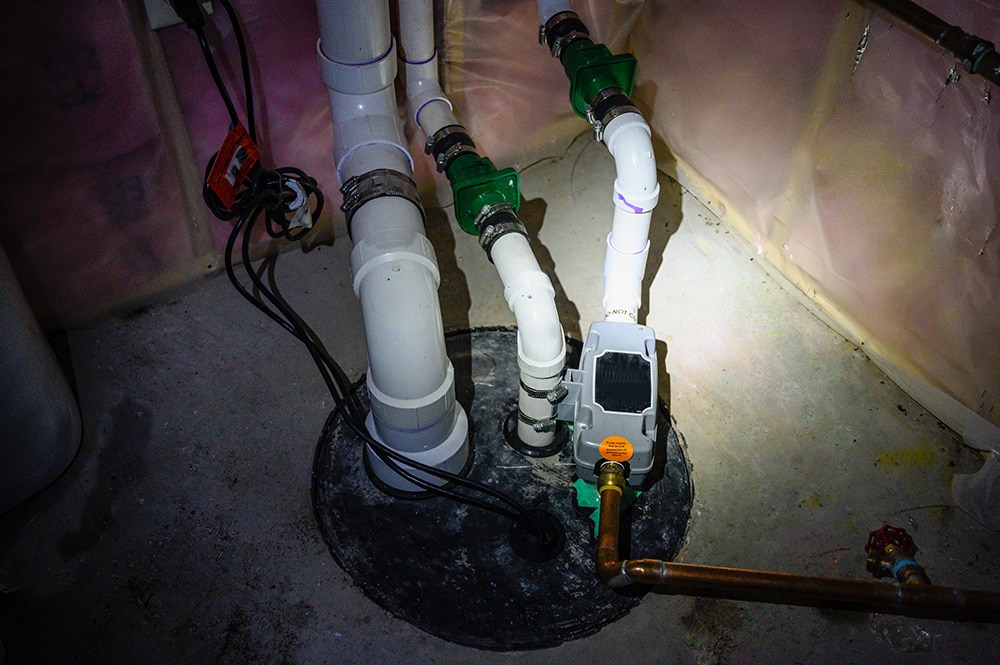
Final Thoughts
Heavy rains and hurricanes can cause blinding damage instantly, and as extreme weather becomes more frequent, fewer and fewer homes will be safe from the impact of severe flooding. Homeowners must understand their risks and their family’s needs in an emergency. Preparing your house for a flood can be easy when you prioritize, and the peace of mind you earn is why you should take preemptive measures today.
See also:
Featured Image Credit: IrinaK, Shutterstock
Contents


